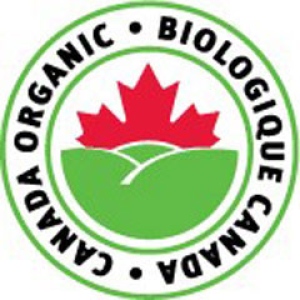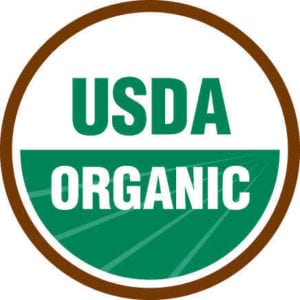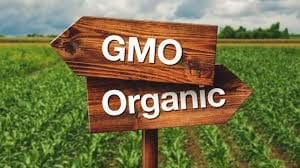April 24, 2017
GMOs and the quality of your food, do you know what you’re eating?
I’m probably the 10000th person to do a blog on GMOs. The reason we are hearing so much about them is because of the GMO labeling law that was passed in the US in July 2016. It was sort of a victory; companies are required to disclose GMOs in their products but don’t really need to actually put a GMO label on the packaging. Companies will have a few different options for disclosure. They can use QR code on the packaging and then the customer can then scan it with a smartphone. They can also print the website URL or phone number on the label. As of now, Canada has no labeling law in affect. This all sounds a bit confusing to me! That’s why I want to emphasize the importance of knowing what you’re eating and more importantly what your children are eating.
The word GMO stands for Genetically Modified Organism. According to the World Health Organization, GMOs are described as foods that have been altered in a way that does not occur in nature. The process starts with the seeds that have been modified to contain specific characteristics such as resistance to herbicides or resistance to insects. Certain varieties of seeds have also been developed to survive high doses of toxic weed killers. Some of these weed killers are associated with many health disorders like cancer, hormone disruption, kidney and liver damage (more on this a little later). These toxic chemicals also end up on our food. One such toxin is called BT-Toxin which was developed to break open the stomachs of insects to kill them. This toxin can also break down the walls of the human cells of the digestive system and may contribute to leaky gut syndrome and other digestive issues. Over 80% of genetically modified crops are designed to be herbicide tolerant.

The same companies that develop and patent GMO seeds are also the same companies that develop and patent pesticides and herbicides that these GMO seeds are resistant to. There is a direct link to the exposure to pesticides and health conditions such as cancer, neurological disorders and reproductive issues. Carcinogens can form in the fatty tissue of the body over time from pesticide exposure. This may even be more of a problem in babies and children because of their low body weight and developing organs. The environmental concerns from the insecticides and pesticides are the residues that can end up in the food chain. Over time they can damage all forms of animal life by draining into nearby streams, rivers and lakes which can affect our drinking water.

GMOs have been around since 1994, the first modified food crop was a tomato. You may not be aware that you are consuming genetically modified food, about 65% of all foods found in the grocery stores contain some form of genetically modified ingredients. The long term impact on human health and the environment is not known because of the short time they have been on the market. Studies done on female rats, who were fed the herbicide Roundup ready soybeans, found that the females gave birth to stunted and sterile offspring. Acord Jeffrey Smith (the man behind the non-GMO movement), 77 couples were experiencing problems with infertility. They were all instructed to follow a complete organic diet. All 77 couples were able to conceive and have children. Other issues such as allergies, organ disruption, early onset aging and potential tumor growth are all linked to the consumption and of genetically modified foods and the chemicals used on them.
It’s important that you know where these foods end up. You are most likely consuming them if you are eating at fast food restaurants and/or buying anything that is processed like cookies, crackers, breakfast cereal ect.
Furthermore, you need to understand that if you are consuming conventionally raised animal products you are consuming their feed and consequently all of the other nasty things they give livestock. Conventionally raised livestock are given growth hormones (for faster growth), antibiotics and are often kept indoors in cramped enclosure.
The most common GMO food crops:
Soybean
According to the USDA’s data, 93 percent of the soybeans grown in the US are GMOs. Soybeans are herbicide resistant. Soybean oil is found in salad dressings, mayonnaise, baked goods, crackers, shortening, non-dairy creamers and, potato chips.
Canola
90 percent of the canola crop in the US is genetically modified. This means that the canola/rapeseed was developed for tolerances to heavy herbicide sprays. Products that contain canola are salad dressings, margarines and most processed food and bread products.
Corn
According to the USDA’s data 88 percent of the corn in the US is GMO. One such variety is known as Bt corn which has a built-in pesticide that kills certain insects when they eat it. The majority of the corn grown is a staple in animal feed and the rest is processed into high fructose corn syrup and corn starch which are used in most processed foods.
Hawaiian Papaya
50 percent of papaya grown in the US is genetically modified. These papayas are developed to resist the papaya ringspot virus.
Potatoes
Only about 10 percent of the potato crops have been designed to be pest-resistant. Although, the USDA has just approved two new types of potatoes that are pest resistant and have less bruising and black spots.
Sugar Beets
95 percent are considered Roundup ready variety. They are resistant to certain pesticides and can be subjected to heavy crop sprays. Half of the sugar in the US comes from sugar beets and the other half comes from sugar cane.
I have only outlined the most common GMO food crops; the list does not stop there. Other genetically modified foods you should be avoiding are: tomatoes, squash, cantaloupe, rice, flax, radicchio, alfalfa and wheat. Also, it is important to add that even if you buy foods that are not genetically modified it doesn’t mean that you are safe from pesticide contamination.
The dirty dozen and the clean 15 is a list that refers to the fruits and vegetables that are the most and least contaminated by pesticides. The Environmental Working Group (EWG) has provided this guide which is called the “Shoppers Guide to Pesticides in Produce”. Consumers can rely on this guide to make the best choices when buying fruits and vegetables.
EWG Dirty dozen:
- Strawberries
- Apples
- Nectarines
- Peaches
- Celery
- Grapes
- Cherries
- Spinach
- Tomatoes
- Sweet bell peppers
- Cherry tomatoes
- Cucumbers
EWG Clean Fifteen:
- Avocados
- Sweet corn
- Pineapple
- Cabbage
- Sweet Peas
- Onions
- Mangoes
- Asparagus
- Papayas
- Kiwi
- Eggplant
- Honeydew Melon
- Grapefrui
- Cantaloupe
- Cauliflower
There are a few things you can do to ensure you are making healthiest choices for your family:
- Follow the EWG consumer’s guides list of the dirty dozen and the clean fifteen.

- This is very important look for the “Non-GMO Project Verified” symbol on the packaging. They are a non-profit organization dedicated to building and protecting a non-GMO food supply through education, outreach programs and marketing of the Non-GMO Project label.
- Choose organic foods whenever possible.


In the end choosing to buy organic foods over the listed GMO crops will ensure that your family gets the most nutrient content and health benefits from their food. Non-organic food usually costs less than organic food although, one has to consider the long term health cost associated with ingesting chemically ridden foods. The food you eat shouldn’t be making you sick. Buying organic also helps minimize the demands on the environment. Organic farming is environmentally responsible farming because of crop rotation, using compost manure and all artificial fertilizers are banned. By doing this they are insuring that the soil remains fertile, maintaining all the minerals and the vitamins.
Knowledge is power, you have the power to change this. It’s called supply and demand. As a consumer your action will have a profound impact on the type of food that is being produced, raised and sold.

Sources:
David Suzuki Foundation Understanding GMOs
GMO compass database
Dr. Axe GMO Side effects Jan. 12 2017
Nura Phoria Foundation of a Good Diet


